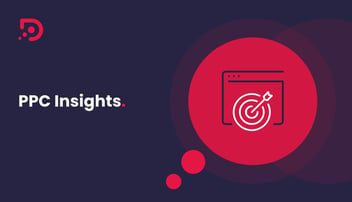Alexa, what is a chatbot?
"A chatbot is a computer program or an artificial intelligence which conducts a conversation via auditory or textual methods".
Browsers, toolbars, and search engines were each designed to reduce the amount of technical knowledge required to get online. Consider chatbots the next step in this evolution. Their inclusion aligns well with the goals of marketing: if your users find it easier to engage, you will find them easier to convert.
Alexa's distinction between computer program and artificial intelligence is important. Some chatbots are command based: they respond to input and cannot operate outside their programming. Others are artificial intelligences: they have the ability to learn, to refine their internal logic and to expand their internal programming. Both have applications as conversational interfaces providing conversational experiences.
Below, we discuss why chatbots are essential to your B2B lead generation campaigns and outline some chatbot platforms to get your started! Read on...
Are chatbots dead?

As with every development since the rise of the internet, chatbots have been declared dead in some circles. As with every other internet development though, this declaration has been accompanied by examination of their nature and by extensive innovation and refinement.
Over the past few years we have seen the scope and definition of chatbot stripped back from fully fledged AI to "light chat-style interface[s] bolted onto a webpage". A decision which has allowed for their deployment in increasingly specialised marketing contexts.
You've probably spoken to a chatbot: the prompt in your Facebook messages to create an event each time a date is mentioned? That's a chatbot. The 'live chat' popups that appear on some websites? There's a high chance some have used chatbots for initial screening and to answer simple queries before passing you on to a human agent.
Each type of chatbot has important implications for your B2B lead generation.
Effective chatbot marketing examples

To be effective, your chatbot marketing strategy should fulfil a purpose. The bots should provide a natural, conversational and engaging experience. One commentator said it perfectly: “a chatbot should work faster than a simple Google search”.
Here are a couple we found cool. They have varying degrees of relevance to B2B marketing efforts and act mainly as inspiration for the range of outcomes you can achieve.
- Staples: Watson, an AI, uses cognitive computing to help customers “reorder office supplies with minimum human interaction”.
- Wall Street Journal: their chatbot uses conversational prompts to match users with the news updates they want.
- Lyft: the rideshare platform use a horde of chatbots to make the booking process as quick, easy, and safe as possible. For the latter, driver number plates are automatically sent to customers.
- Pizza Hut: you can order pizza with no human interaction through Facebook, Twitter, or Alexa (perfect for your next round-table meeting).
How not to do it
When the scope of a chatbot is too broad, things can go wrong. In 2016 Microsoft released Tay: an edgy chatbot mimicking a typical teenage web user.
People were able to educate Tay with the content of their tweets and, in a damning indictment of social media, she quickly became racist and genocidal. Her creators wisely intervened and deactivated her. Tay’s controversial and inflammatory tweets are now locked away at the Twitter handle TayAndYou.
The marketing benefits of chatbots
Here are chatbot outcomes with tangible positive impact on your B2B lead gen strategies:
Reduce the amount of human resource required for low level customer support and queries. A chatbot can provide answers to queries about your products and services without input from a human agent and pass more complex queries to the most suitable department. This matches prospective customers to the information they require, allowing your human resource to be directed toward sourcing and converting leads.
Scale up operations by making it possible to deal with exponentially more queries than before. Where a human agent can deal with 2 or 3 conversations at a time, a chatbot is limited only by the upper cap on your subscription level. This is relevant for informational queries about products and services, as well as support queries from existing users.
Qualify leads and create tickets. A chatbot can integrate into your existing internal processes, providing effective project and lead management. By integrating with tools and software like Slack, Gmail, Trello, and Jira, chatbots can create and assign tasks to human staff, ensuring leads are responded to and followed up on.
Reduce response time. A chatbot can respond instantly, whereas human agents may be busy when a customer makes an enquiry. Shorter response times correlate with lower bounce rates!
Increase engagement. Web users expect to read text, not to hear a human voice. Thus a text pop-up is more palatable than a robotic voice on the other end of a phone. Textual chat also chimes better with an anecdotally large preference for our generation to prefer digital conversations to telephone ones.
Automate distribution of marketing material. This can be achieved by programming a chatbot to respond to certain triggers. Has someone spent a long time on your page? Offer to answer their queries in real-time. Have they hovered over a CTA a couple of times? Prompt them to sign up for a free trial.
Centralise information about each lead. Transcripts are stored centrally, meaning any member of staff with access permission can review the conversation history. This gives greater internal visibility when responding to queries or developing leads.
Some chatbot outcomes are less directly related to B2B marketing, but have indirect organisational implications, allowing more internal resource to be allocated toward it.
Booking meetings. Quick and easy text commands allow a chatbot with access to a room calendar to make, manage and cancel bookings.
Effortless deployment. Most chatbot platforms allow their bots to be created and deployed increasingly easily, with many striving to require zero coding experience. This lowers the barriers to entry and removes the need to hire development staff.
Timesheet management. Replace traditional timesheet software with daily prompts in Slack.
Chatbot platforms and their pricing

You can benefit from a proliferation of platforms, each offering a slightly different nuance on chatbot integrations. Many platforms operate on a freemium model, where access is free but restricted unless you upgrade to a paid subscription. Unless otherwise specified, paid subscription allows for some combination of more interactions, more simultaneous bots, a longer duration of chat log, deeper insights, and removal of provider branding.
Some of these tools were mentioned in the previous section: multiple mentions do not imply increased endorsement!
Hubspot. Their chatbot offering is expansive and simple and the type of bot you can create is determined on your subscription level.
Nikabot. A great example of specialisation, Nikabot prompts employees to report what they've been working on. Nika is a human employee previously responsible for timesheet management, who has now been immortalised in bot form. Integration with Slack. $4.99/user /month.
Acebot: Survey engagement, $49+ per month with increasing numbers of completions.
Twyla. A "conversation design platform" with no pricing info readily available.
Wizu. The focus is sentiment analysis, with applications including customer feedback, employee satisfaction and similar. Freemium with paid subscriptions starting at £60 per 100 responses.
Landbot.io: Special mention for the slick landing page design, which is just a fullscreen 'chat' window (you choose from prompts rather than using actual text). No pricing info readily available.
QnAmaker.ai: Part of Microsoft Azure. Freemium, with an intriguing monthly cost of "£7.454"
MobileMonkey: Freemium with a generous free offering. Paying gives access to specialist message automation options.
Flowxo: Freemium. Paid options start at $19 / month with bolt-ons available to increase bots or interactions.
Chatfuel. Freemium, from $15 - $180 per month depending on active users.
Recast.ai. Freemium, no pricing info readily available.
Morph.ai: Freemium, no pricing info readily available.
Conclusion
Specialisation and a re-examined marketing landscape means your chatbot marketing strategy can fulfil many important functions.
By integrating with existing tools, software, and messaging platforms, engagement is made easier: you are more likely to engage with a prospective customer on a platform they are familiar with than you are to convince them to download, sign up for, and learn to use a whole new app or platform.
"Be where your customers are" is a popular marketing adage. In the context of the shift of focus from press to radio, from radio to TV, then from TV to web, social media and now instant messaging, chatbots are a great way to slide into your prospective customers' DM’s, as it were.






